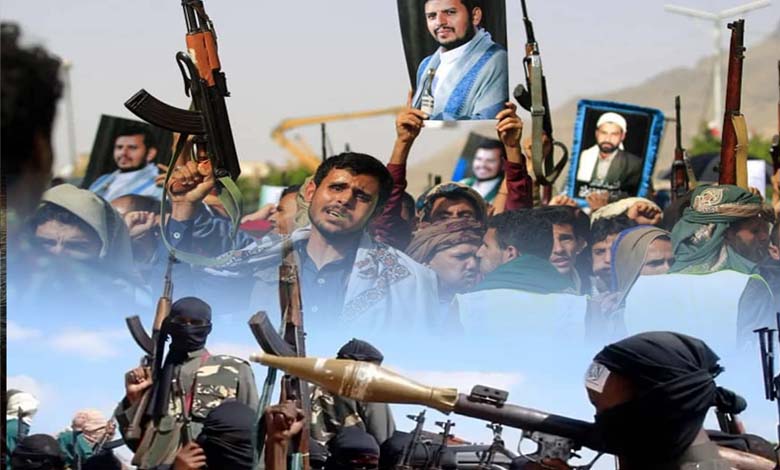The Houthis and Somali al- Shabaab: “The Devil’s Alliance” Reaches the Horn of Africa

Houthi militias have expanded their terrorist activities from Yemen to the Horn of Africa to form a military alliance with the Al-Shabaab terrorist movement, an Al-Qaeda affiliate in Somalia, aiming to threaten navigation in the Red Sea.
For two decades, the Houthi militias and the Al-Shabaab movement have exchanged weapons in a coordinated manner. However, in recent years, the Houthis have begun transforming Yemen into an advanced Iranian base to manage and direct Iranian influence in Africa, particularly in the Horn of Africa, a region of strategic importance, according to analysts.
The Al-Shabaab movement has become one of the primary allies of the Houthi militias, which have consistently supplied it with weapons. Since the end of 2023, with the launch of attacks on ships, they have strengthened their relations with this group, classified as one of the most powerful branches of Al-Qaeda in the world, with the aim of functioning as a separate military wing to threaten navigation.
Yemeni security sources said that “officers of the Iranian Islamic Revolutionary Guard Corps are present in northern Yemen to work with Houthi intelligence leaders, Hassan Al-Murani and Abu Haidar Al-Qahoum, to coordinate joint actions and direct contact with members of the Somali Al-Shabaab movement.” A recent report from a local organization specializing in tracking organized crime confirmed that the relationship with Al-Shabaab is part of the militias’ external expansion, particularly in the Horn of Africa.
The report revealed that the Houthi militias have formed a security unit composed of their leaders in the fields of security and diplomacy to manage this expansion file, especially in the Horn of Africa, to achieve arms trafficking, drug trafficking, human trafficking, and other security, military, and political activities, aiming to demonstrate the regional capabilities of the terrorist group.
First Expansion Activity of the Houthis
The organization P.T.O.C, a Yemeni agency for monitoring organized crime and money laundering, stated that “the external expansion activities of the Houthi militias, particularly in the Horn of Africa, are directly managed by officers of the Iranian Islamic Revolutionary Guard Corps, under the coordination and supervision of Hezbollah.”
It confirmed that the Houthis have conducted various activities, from recruiting to exploiting African communities in Sanaa, to establishing close relations with the Al-Shabaab movement. They have sought to recruit many African refugees to fight in their ranks on several fronts and later selected some to return to their home countries to promote their expansion in Africa.
The report indicated that “the Houthis seek to establish strong influence within African tribes such as the Afars, Oromos, and Ogadens, and are currently prioritizing working with African communities to coordinate the arrival of anyone wishing to join their control zones in northern Yemen, to train and send them back to their home countries to strengthen Iranian influence in the region.”
The report confirmed that the Houthi militias have begun opening secret camps in Al-Hodeidah, Al-Jawf, and Saada to train elements from the Horn of Africa, prepare them for military and security missions, and have them work for a while on internal fronts in Yemen before sending them back to their home countries.
The report provided detailed information on four security leaders of the Houthi militias managing the external expansion and Horn of Africa file, working closely with Al-Shabaab, led by Abdulwahid Naji Mohammed Abu Ras, alias “Abu Hussein,” responsible for this file.
The report mentioned that “Abu Ras,” from Al-Jawf province: “has taken charge of this file on direct recommendation from senior Iranian political leaders and chiefs of the Iranian Revolutionary Guard Corps, primarily Ali Akbar Velayati’s office in Tehran, and has previously managed several files with Revolutionary Guard elements in Yemen and abroad before disappearing from view.”
The report revealed that the second responsible for Houthi militias’ activities in the Horn of Africa is chief Hassan Ahmed Al-Kahlani, alias “Abu Shahid,” who holds the position of Undersecretary for External Operations within the militia’s security and intelligence services.
The third responsible for managing this file is chief Adham Hamid Abdullah Al-Affari, alias “Abu Khalil,” who works closely with African communities in Sanaa, particularly those from Ethiopia, Somalia, Eritrea, Sudan, and Djibouti, and has been involved in recruiting many individuals to send them to various fronts.
The fourth responsible working on this file is Osama Hassan Ahmed Al-Makhdi, alias “Abu Shahid,” who is in charge of recruiting arrivals from the Horn of Africa and returning them to their home countries to work on intelligence missions, spreading Houthi Shiaism, arms and drug trafficking, and human trafficking, according to the same source.
Multiple Objectives
In addition to security leaders, Hussein Al-Azzi, supervisor at the Houthi Ministry of Foreign Affairs, manages the coordination file with African communities in Sanaa or militia sympathizers integrated into the diplomatic corps and deployed in African countries.
According to the report, about 16 people from the African continent have been recruited by the Houthis and have undergone sectarian, military, and security training to work with the militias on multiple missions.
At the head of this group is “Ibrahim Abdelkader Mohammed Ma’lim,” head of the Somali community in areas controlled by the Houthis and one of the main coordinators with the Somali Al-Shabaab movement, and “Mohammed Saleh Ibrahim Said,” who serves as the contact point between Houthi intelligence services and the terrorist group.
The report affirmed that the Houthis‘ objectives in the Horn of Africa align with Iran’s strategy to strengthen influence in the region, in addition to playing regional roles to ensure arms supply lines and achieve intelligence and military goals.
The report specified that one of the intelligence objectives is for the militias to use their cells in the Horn of Africa to gather information on military and commercial activities in the Red Sea and Gulf of Aden, and monitor and analyze the movements of allied countries of Saudi Arabia, the United Arab Emirates, and the United States in the region, while strengthening Iran’s intelligence capabilities in the region and recruiting local African agents to collect information and provide logistical support.
Politically, the report emphasized that the Houthis seek to intervene in the affairs of Horn of Africa countries and influence their internal and external policies, to reduce their relations with regional countries opposed to Iran, and to sow chaos.
Militarily, the report revealed that the militias seek to secure supply lines for strategic ports and control important maritime access points to ensure the influx of weapons and create bases to store weapons and train fighters.
The report also indicated that the primary objective of the Houthis‘ activities in the Horn of Africa is to use their alliance with terrorist groups like Al-Shabaab and gang leaders to launch attacks on commercial and military ships of international alliances and threaten maritime navigation to increase pressure on their adversaries in the region.
The Houthi militias have also supplied large quantities of weapons to the Somali Al-Shabaab movement, which could increase the influence of Al-Qaeda elements and other terrorist groups in the Horn of Africa region, according to the report.
-
Somalia Seeks to Threaten the Security and Stability of the Country with Its Criminal Acts
-
Why do organizations classified as terrorist use women in suicide operations?
The report recommended regional and international alliances and affected countries to enhance maritime surveillance and increase patrols in the Red Sea and Gulf of Aden to ensure the security of maritime navigation and reduce trafficking and Houthi activities with terrorist groups, and to impose more economic, security, and political sanctions against the Houthis.
Yemeni experts estimate that the Horn of Africa has become one of the main battlegrounds for the terrorist militia to demonstrate its military and intelligence capabilities in the region.












